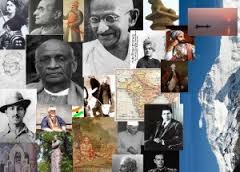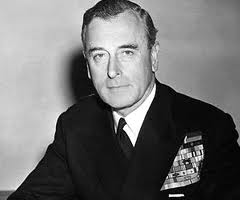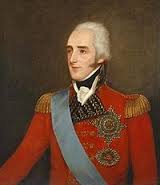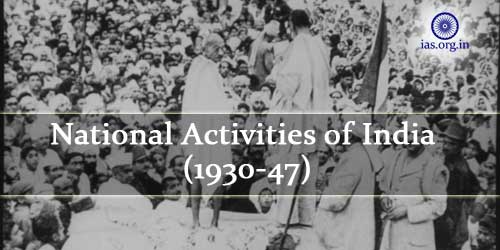The view that many significant characteristics of the administrative structure under the Mughals were taken directly from the administrative system of the Sultanate and Sher shah get strength from some quite transparent evidences such as the Mughals introduced suba in place of Sher shah’s pargana; the term suggest the meaning of ‘a group of villages.’
Under Sher shah, there were administrative units of Pargana- a group of villages; Sarkar– a group of parganas; and group of Sarkars– somewhat like Suba or province- which were placed under specific offices. The Mughals, however, formalized a new territorial unit termed suba. The Mughals also set up the institutions of Jagir and Mansab systems.
Therefore, it can be asserted that the Mughal Administrative structure, characterized by both continuity and change, introduced a high level of centralization in their administrative system.
Also Read: Sher Shah Suri
Central Administrative Structure (under the Mughals)
- The Empire: As the Supreme Head of the administrative structure the Emperor controlled all military and judicial powers. All administrative officers under the Mughals owed their power and position to the Emperor. The Emperor at his pleasure used to appoint, promote, and remove any one; he had no institutional pressure and it was for the sake of smooth functioning of the empire that a few departments were created.
- Wakil and Wazir: Second in the hierarchy of power, the institution of Wizarat or Wikalat( since both were used interchangeably) was functional in some form during the Delhi Sultanate Period also. However, it was during the reign of Afghan rulers in the Delhi Sultanate that the position of Wazir lost its position of pre-eminency which was promptly revived under the Mughals. During the reign of Babur and Humayun, Wizzirs enjoyed great powers; in fact the period of the regency of Bairam Khan witnessed an unprecedented rise of wakil-wazir with unlimited powers; perhaps this justifies the determination shown by Akbar in curbing the powers of Wazir; Akbar took away the financial powers from him.
- Diwan-i-kul: The Chief diwan was known as Diwan-i-Kul in the central administration structure under the Mughals. As the Diwan had the responsibility of managing revenue and finance, Akbar to strengthen the office of Diwan entrusted the revenue powers to him. Since the diwan had under his charge the entire revenue collection and expenditure of the Empire, he used to inspect all transaction and payments in all departments and in addition supervised the provincial diwans. The Diwa-i-kul had to report about the status of sate finance to the Emperor on daily basis.
- Mir Bakshi: As the virtual head of the military administration under the Mughals Mir Bakshi used to pass orders of appointment of mansabdars and endorse their salary papers. In order to ensure that the mensabdars property maintain the sanctioned size of armed contingents and war equipments Mir Bakshi kept a strict watch over them. It was the responsibility and duty of the Mir Bakshi to present new entrants seeking service to the Emperor.
- Sadr-us Sudur: The head of the divinely department, Sadr-us Sudur’s chief duty was to protect the laws of Shariat. The office of Sadr-us Sudur was made very lucrative during the first twenty five years of Akbar’s reign because it was the duty of the office of the Sadr to distribute allowances and stipends to the religious institutions and eligible persons.
Must Read: The Later Mughals of the (Mighty) Mughal Empire
The power of this officer to regulate revenue free grants for religious and charitable purposes was later restricted. To ensure the general observance of the rules of morality officers called Muhtasibs (censors of public morals) were appointed; his duty also included the examination of weights and measures and enforcement of fair prices, etc.
- Mir Saman: The officer in-charge of the royal Karkhanas, known as Mir Saman was responsible for all types of purchases and their storage for the royal household. His duty also included the supervision of the manufacturing of different articles to be used in the royal household.
Also Read: The Revenue System under Mughal Administration
Provincial Administrative Structure Under the Mughals
It was Akbar who primarily divided the Mughal Empire into twelve provinence, or Subas as they were also called, with an intention to ease the functioning of the administration of the Empire as a whole. These twelve provinces were Allahabad, Agra, Awadh, Ajmer, Ahmadabad, Bihar, Bengal, Delhi, Kabul, Lahore, Malwa, and Multan; Ahmadnagar, Bearar and Khandesh were added later on. However, with the expension of the Empire the number of provinces increased to twenty.
An office of Sibedar, in each suba was created the provincial head, was responsible for maintenance of general law and order. The Subedar, who was directly appointed by the Emperor, encouraged agriculture, trade and commerce and took steps to increase the revenue of the State.
The Diwan, the head of the revenue department in the Suba, was appointed by the Emperor and was an independent officer. His duty included the supervision of the revenue collection in the Suba and maintain accounts of all expenditures. His was also a duty to increase the area under cultivation. It is a matter of record that in many cases taqavi (advanced loans) were given to peasants through the office of the Diwan.
The Bakshi in the provincial administrative structure under the Mughal performed the same functions as were performed by Mir Bakshi at the centre. And Sadr functioned as the representative of the Central Sadr-us Sudur at the provincial level. He was essentially responsible for the welfare of those who were engaged in religious activities and learning. Further, his duty also included the responsibility of looking after the judicial department and in that capacity supervising the works of the Qazis.
The other officers at the provincial level were: Darogai-i-Dak to maintain the communication channel; Mervars– they were the postal runners who were used by Darogai-i-Dak in sending letters to the court of the Emperor; and Waqainavis and Waqainigars to provide reports directly to the Emperor.
Must Read: Impact of Religious Policy of Aurangzeb on Mughal Empire
Local Administrative Structure under the Mughals
The Subas (or provinces) were separated into Sarkars and Sarkars that, in turn, were divided into parganas. The smallest unit of administration was village.
The faujdar and the Amalguzar were two important functionaries at the level of Sarkar. Sometimes within a Sarkar a number of Fauzdars, who were appointed by the imperial order, existed and at times their jurisdiction spread over two Sarkars even if these belonged to two different Subas.
It is important here to comprehend that Faujdari was an administrative division whereas Sarkar was a territorial and revenue division.
The Amalguzar or amil was the rvenue collctor, whose duty was to assess and supervise revenue collection. His responsibilities included among other things the maintenance of all accounts and sending the daily receipt and expenditure report to the provincial Diwan.
At the Paragana level, the executive officer was called the Shiqdar who assisted the amils in the task of revenue collection. The Forts were placed under an officer called Qiladar who was in-charge of general administration of the fort and the areas assigned as Jagir to him.
Don’t Miss: Mughal Architecture






